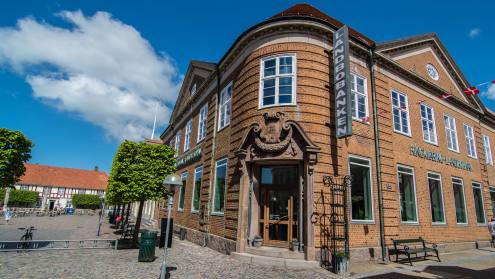Luxembourg, Ireland, Jersey, Monaco... San Marino. The mini-republic that sits on a mountain about 25 kilometres from Rimini, on Italy’s Adriatic coast, has ambitions to become a financial centre.
Over the past three years, the tiny state of just 30,000 inhabitants who pack into a small enclave completely surrounded by Italy, has taken measures to make itself attractive to savers, investors, bankers, insurers, lawyers and others who make their living from finance. Regulations to cover fund management were approved in
September and the authorities expected the first applications to open funds to reach them in mid-November.
Image conscious
San Marino is trying hard to shed the shady reputation it once had. “We are not a tax haven and do not want to be one. And we have to be transparent,” says Fiorenzo Stolfi, secretary of state for foreign affairs. Stefano Macina, his government colleague at the finance ministry, says that internationa credibility can only be won by creating the right regulatory climate; rules are needed and these must be clear.
“Investors and savers have to be protected by effective controls and by financial supervision that works to international standards. Our recent legislation aims at achieving that. San Marino must free itself of the cloudy name that it has sometimes had,” says Mr Macina.
Mini San Marino’s big bang bega in June 2003 when a law was enacted to establish a central bank with supervisory powers over the whole financial sector. The process of setting it up was completed two years later, in June last year, and the Banca Centrale della Repubblica di San Marino has just published its first annual report.
Luca Papi, the director general appointed when the law was enacted, had previously worked at the Bank of Italy, the World Bank and the Asian Development Bank. At the beginning of this year, the bank tackled the question of financial supervision, recruiting Stefano Caringi, a former senior inspector at the Bank of Italy. Mr Caringi had been involved in some of Italy’s trickiest banking cases, including the notorious BNL Atlanta affair.
Perhaps it was coincidental, but shortly after Mr Caringi’s arrival, on March 29, the Congresso di Stato, the republic’s government, issued an edict removing the boards of directors and statutory auditors of the Banca del Titano and a related finance company. Serious irregularities had been uncovered during an inspection – anomalies in credit management had taken non-performing loans to twice the bank’s share capital – and the bank was put in the hands of two special commissioners.
Shock waves
The government decision, taken on the central bank’s recommendation, was traumatic. Never before had a bank’s managers been removed by force of law. But the move showed that the republic is not scared of taking steps to realise its hopes of becoming a financial centre on a par with Ireland and Luxembourg.
Banca del Titano began operations in 2000; it was the first of eight banks that opened in San Marino after the banking sector was liberalised (previously granted by the government, bank licences have become the central bank’s responsibility). The republic now has 12 commercial banks and together they operate 52 branches, resulting in an average of less than 600 inhabitants per branch. A cluster is located near the border-post through which traffic arrives from Italy. Indeed much of the republic’s banking business is done with Italian customers.
Total deposits held by San Marino’s banks amount to almost €11.7bn – the republic uses the euro as its currency and mints a small number of coins that end up in numismatists’ collections. This figure is about 12-times gross domestic product (GDP) and represents about €400,000 per inhabitant – be they child, adult or pensioner.
Clearly, San Marino must maintain good relations with its large neighbour. Italy would be rightly aggrieved to have a piratical financial centre lodged within its own borders – although it is probably easier for the authorities in Rome to keep an eye on what happens in San Marino than in other financial centres where Italian banks and financial institutions operate and Italian savers keep funds.
Above board
Distance is not a problem and neither is language. The central bank’s close working relationship with the Bank of Italy reflects that this is part of belonging to an international financial system. “We give particular attention to the question of money-laundering and share information in this area. We have to enjoy the trust of other central banks. We do not want to be the Cayman Islands of Europe,” says Antonio Valentini, chairman of San Marino’s central bank.
This co-operation does not mean that San Marino is falling into line with what Italy does or wants. It must offer competitive advantages if it wishes to attract financial business. So banking secrecy remains a cornerstone and its taxation has to be lower, not over-aggressive but certainly with an edge on Luxembourg and Ireland.
The finance act that San Marino’s parliament approved a year ago, which became effective in April this year and followed the establishment of the central bank, is the foundation for the republic’s hope for growth as a financial centre. A law on trusts has been enacted and regulations on insurance are expected soon. Some of the Italian businesses that have been lured north may move to San Marino; travel costs will be lower.











